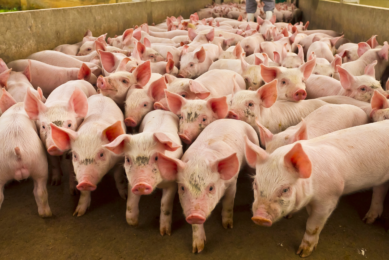Putting out the ‘fire’ of antibiotics usage

The passion of people in the swine business goes deep, to do what is good and what is right. Nevertheless, the pig industry faces fires of criticism and is challenged to constantly rethink practices. With regard to the ‘fire’ called antibiotics usage – it’s good to look at the total picture and not hope for one solution, swine nutrition technology expert Casey Bradley writes.
A common phrase a lot of us use in the industry here is that we are constantly ‘putting out fires’ to say that we are dealing with situations that are at a critical point. They can be a small trash can fire that could turn into a catastrophe. The recent ‘60 Minutes’ story on swine production and antibiotic resistance is one such fire we are trying to fight as a pork industry here in North America.
Why do we use preventive medicine?
Despite your personal thoughts on the story or the use of antibiotics in livestock; one point that resonated for me while watching the report was the terrible misunderstanding of why we use preventive medicine. It’s truly hard to understand the value of healthy animals until you have personally dragged dozens or more dead pigs out of a barn. Regardless of the physical difficulty, it leaves an emotional drain or feeling of defeat within a good manager.
I may not have the responsibility of overseeing pigs physically on a daily basis, but I can tell you that I worry and think about the well-being of every animal I place into a research trial. I still lose sleep on a regular basis. Call it love, call it passion, call it craziness, it’s just my nature and unfortunately something our critics will never know about me and others in our industry.
There is no such thing as antibiotic replacement
The pressure will be on the hog industry to move further away from antibiotics. However, we all like to talk about ‘antibiotic replacements’. But there is no such thing as an antibiotic replacement, or it would be called a new antibiotic. The real solution is through balancing nutrition, health and management. Within all these segments there are unique characteristics of each system and unique characteristics within each system.
Some example characteristics that may differ between systems can include transportation distance and time of weaned pigs, comingling of different sow farms, wean-to-finish versus the traditional nursery at weaning, feed ingredients available, and so on. Antibiotics have worked because they have a specific mode of action and/or cause and effect. If I have ‘X’ disease or potential of ‘X’ disease, then taking antibiotic ‘Y’ at ‘Z’ rate and the problem goes away.
Phytase has a well-established mode of action
In my world, feed additives very rarely have a specific mode of action. Phytase, a well-known enzyme, has very well-established mode of action, it cleaves the bond to release phosphorous from phytate. But what happens afterwards has even more value than we imagined when it was released in the 1990s. However, success rate for concepts like superdosing phytase to potentially increase ADG in swine is still not 100%. The mode of action is clear, but the interference of response may not be clearly understood within a system.
Read more expert opinions in our special section
Thus, research or data exploration is needed to understand the cause and effect within a system. Then work in collaboration with your veterinarians, nutritionists, geneticists, production team on viable strategies to reduce the need of antibiotics within your system. Believing in a magic antibiotic replacement feed additive may leave you with more fires than you can manage in a system.
I am not afraid of a little heat to help get us heading in the right direction.
(In closing, just want my friends in Australia to know that you all have been on mind and my heart goes out to all of you.)











